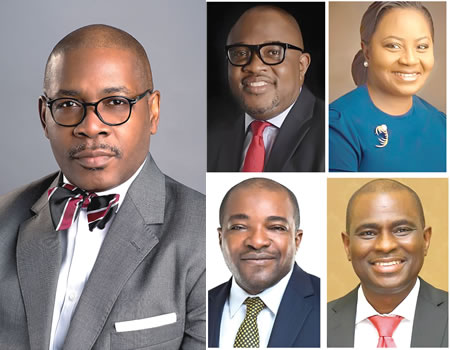A failed plan is not the end of the road; neither does it signify the end of the world nor is it an indication of an aborted dream. Though a failed plan could be a setback or a letdown, it should not be a reason to let go of a goal. Those who become distraught by the failure of a plan see their plans as an end. A plan is not an end; it is a means to an end. The goal is the end. A plan is needed to facilitate the actualization of the goal. So, when a plan fails, not much is lost. When a plan fails, what should be done is to change the plan, but certainly not the goal. When a plan fails, don’t lose focus. Those who get derailed by a failed plan focus too much on the process rather than the product; hence they get discouraged and lose the drive to continue when the process goes wonky. But those who understand that plans are merely a vehicle to get to a destination, and not the destination itself, will not waste time to abandon a wrecked vehicle (failed plan) and board another to arrive at their desired destination.
Why plans fail
Plans fail for a number of reasons. Here are some of them.
Inadequate reflection
Though every idea may be good, it is not every idea that is implementable at every given time. Some ideas may require further fine-tuning before being implemented. What makes the steps to take after the conception stage of an idea clear is reflection. Reflection is not done perfunctorily. Thinking is a serious and rigorous exercise; it is not for nothing that organizations and global agencies have think tank groups. So, before embarking on the journey to implement an idea, subject it to serious reflection and interrogation. It is at this point that all the t’s get crossed and the i’s get dotted. Adequate reflection results in proper preparation, which prevents poor performance. Those who set out without proper reflection often have to go back to it when their plans fail. To minimize plan failure, it is important to make time for proper and adequate reflection.
Lack of proper personnel
Plans don’t run themselves; they have to be run by people. The failure or success of a plan is dependent largely on the capacity of those handling it. So, if a great plan is handled by mediocre people, the result cannot be great. If the marketing of a great product is left to average people, the product will have limited impact. A piece of work is only as good as the workman. So, to ensure that your plan works out well all the time, get the right people to handle it. Sentiments should not be given any place when it comes to team selection. To get the desired expectation, get the best hands available.
Circumstances beyond one’s control
Sometimes plans fail not as a consequence of inadequate reflection or incompetent personnel but due to circumstances beyond one’s control. A change in government policy has the capacity to reduce a great plan to tatters. Unexpected liquidity squeeze can make a mess of an otherwise great plan, a natural disaster can turn an outstanding plan on its head, and a change in people’s preference can make nonsense of an exceptional plan.
Between Multichoice and HItv
Toyin Subair’s indigenous pay television company, HItv, stormed the nation with a big bang when it was launched. It appeared poised to give DStv a good fight. It actually almost edged the South African competitor out of the market, especially after getting the licence to broadcast EPL matches. But the company ran into a hitch after a while because of the difficulty it had with raising fund from banks to pay for the renewal of the EPL licence. The licence to broadcast EPL matches was eventually given to DStv, its competitor. With the loss of the licence, HItv went down. Subair’s excuse? The company had racked up debts and there were infightings among the shareholders. As a result of that, a promising company was allowed to go under.
But when DStv lost the EPL licence to HItv a few years earlier, rather than allow the company to die, what the management did was to introduce indigenous films and programmes to woo its Nigerian audience. That gave rise to Nollywood movies being broadcast for 24 hours daily on a DStv channel. But that one channel has now grown to almost 10 channels. Multichoice did not allow its failure to get the EPL licence destroy its operation. Unlike the HItv leadership, the management thought out of the box to rescue the company.
What to do when plans fail
What’s next when faced with a failed plan?
Accept the reality
Many people who fail to get back on track following the failure of a plan get into that rut because of their inability to accept the reality as it is. But until one comes to terms with the reality and confronts it, nothing changes. Those who find it extremely difficult to get out of the rut of mourning the failure of their plan are those who get over-obsessed by the plan. (It is great to be excited by a plan but everything is wrong with any form of obsession.) For them to get out of the runnel, they have to go through the five stages of grief as explained by Elisabeth Kubler Ross in her 1969 book, On Death and Dying.
According to her, after an untoward occurrence, the first reaction for many people is to deny what has happened. The affected person refuses to accept the reality of the occurrence. This is followed by anger. The individual feels angry and may take out his anger on those around him. He blames anyone and everyone for what has happened. Ross said anger is a necessary stage of the healing process. Then comes the stage of bargaining, which is more about asking the ‘what if…’ questions. The person runs through what has happened in his mind and concludes that perhaps what has happened could have been prevented had he taken some steps. This leads to depression. The author says the stage is very critical to getting out of the grief. Then comes the final stage of accepting the reality of what has happened.
While some persons can go through these stages speedily, others take their time. Those who spend too much time going through the stages may never get back to working on their goals. So, it is best to snap out of dwelling on what is behind so that the energy can be expended on what is ahead.
Don’t lose focus
As important as the means is, it is nothing compared with the end. So, the plan is not as significant as the goal. Plans are nothing but a means to an end. So, don’t lose focus of the goal. Why did you start out initially? Don’t ever lose sight of that. What do you plan to achieve ab initio? When everything else fails, let that keep you going. Multichoice management understood this. When their plan to get the EPL licence hit the rocks, they did not lose focus of their goal which was providing entertainment for the people and making money in the process. They kept that goal in focus, worked on their goal through other means and today the company is the better for it.
Avoid blame game
One comforting attitude when plans fail is to look for a fall guy. But that is the arena of failures; great leaders never descend into it. Blaming others for a bad turn robs one of the sense of responsibility to do what is necessary to remedy the situation. Blame game de-motivates, it de-energizes and leads to the wrong road. Instead of blaming others for what has happened, take responsibility for it and for correcting it. When the leader assumes responsibility for a failed plan, he detoxifies others of lethargy and gets them back on the winning path. But when the leader wallows in self pity and blames everyone, he invariably tells his lieutenants that the failed plan is of more significance than the shared goal.
Be positive
A failed plan is not the end of the road; it is only a bend on the road. So, rather than engaging in self pity, see the situation as an opportunity to achieve your goal in a better way.
In 1924, Soichiro Honda, founder of Honda Motors, designed a new piston ring which not many experts gave a chance given the designs in vogue at the time. But Honda was not bothered by experts’ opinions. He invested the whole of his life savings on the project. When that was not enough, he pawned his wife’s jewelry and put the proceeds in the project. Eventually, he got his vehicle out but initially the product was spurned. After a while, the car became the preference of Japan and other Asian countries.
As he was reveling in his success, his main factory was destroyed during World War II by United States bomber planes in 1944. As if that was not bad enough, the following year, his second factory was leveled by an earthquake.
Soichiro Honda’s dreams and hopes were blown up, but he was positive. So, he refused to give up and started the process of rebuilding the company. This time, the building was at a faster pace because he had already built a reputation. Honda Motors bounced back and it has been growing strong since then. To the credit of Soichiro Honda, the company that almost died as a dream posted a profit of $2.86billion in 2016.
Re-strategise
When your plan fails, change the plan, not your goal. So, if a plan does not work, drop it for another that will work. When a plan fails, go for another. The plan is the vehicle that will bring the goal home. So, if the plan is right, the result will be right, all things being equal.
Last line
A failed plan is nothing but an opportunity to improve on the initial plan and get a better result.






